Poker tournaments are exciting, but also long and exhausting.
On TV you will see the bright lights and bundles of cash on the table with a bracelet or a trophy for the winner. But behind the victories lies a lot of dedication. Getting there requires discipline, patience, and usually a lot of practice.

The major difference between a tournament and a cash game, from the players’ perspective, is the amount of control you have over the conditions. In a cash game, you can leave any time: Feel hungry or tired? Grab a snack or a nap. Did all the bad players just leave the game and get replaced by pros? Go find another game. Notice that you are not focusing very well? Take a break. Did you play a hand perfectly but get a bad beat? Buy back in. Whatever else happens, you are on your own schedule, and you get to control which games you sit in and how long you stay.
In a tournament, you have essentially none of that control. The tournament organizers choose where you sit and who sits with you (usually by random draw). And the tournament organizers decide the schedule and when the breaks are. Moreover, you have to play until you are eliminated or you win the entire tournament—which can sometimes take a week or more, playing ten hours a day. And of course, once you are eliminated, you are out—no matter how unlucky it was (unless the tournament offers rebuys).
To make it in the tournament world, then, you not only have to be a skilful poker player, but you have to maintain your focus over the course of the entire tournament. You also have to keep at it: in any given tournament, you may play very well and be eliminated due to misfortune—but over time, in tournament poker as in cash game poker, the skilful players succeed.
To do this well, you have to treat poker like any other sport. Tournament poker is about mind, body and soul. All three need to work in rhythm and sync in order to make those key high pressure decisions over and over again. You may hear of players paying attention to mindfulness, meditation, exercise, and nutrition. These are all very important when you are playing days of poker with little rest.
7 tips on poker tournament strategy
For anyone who thinks they might want to play in a tournament (rather than just games with friends or at the casino):
- Don’t get over excited in the first levels. The blinds are relatively very small. If you pick up decent hands or you think you can win a big pot with low suited connecters, then go for it. But be careful not to get too excited. The upside isn’t so big that it is worth taking a lot of risk early.
- Tournaments are long. You are going to get some bad beats. See the bigger picture. It will put the bad beats into context. Your tournament strategy can survive a couple of bad moments if you don’t lose your head.
- Try and spot weak players to play against. By the same token, stay clear of the really good players until you can figure out their play.
- Always try to mix things up. Be very aware of your table image. For example, you’ve been playing for an hour and you have good hands. So naturally, you have been raising pre-flop a lot without having to show your cards. However, to mix things up try raising on some weaker hands too, and keep your opponents guessing. I myself did just that half way through my poker career. And once your opponents spot that you have loosened up, play tight again to get them to make mistakes.
- Table assignment is something you need to be aware of. Which table you are on, and which players you are playing with, is out of your hands. Sometimes you can be with some very good players, sometimes less so.
- Remember your position at the table. That will change over the course of the tournament when you change tables as you progress through the levels.
- And be aware that because you will be playing against so many different players over the course of a few days, often players you have never been up against before, you need to be reading their tells, their bluffs and their traps.
5 tips for surviving the length of a poker tournament
On the human level:
- Give yourself time before the tournament starts to sit quietly, collect your thoughts, and gather your energy.
- Try and create some sort of playing ritual, so whenever you win or lose you are steady and focused. This could be inhaling to three, exhaling to six and repeating three times.
- Come prepared. Bring healthy food and if needs be energy drinks, (but be wary of too much caffeine, it can make you impulsive and too aggressive at the table).
- Try and find food groups that stimulate your brain. And remember to stay hydrated. It sounds obvious but the brain needs to be fed and water is vital in that process.
- Make sure you know where the restroom is because if you are playing long levels with few breaks there will be times when you might need to rush out.
These are just a few of the things I have come across playing tournament poker. If you can include them in your game both in terms of health and playing style then you will be on your way to becoming a winning player.
Poker is not just flopping hands and winning chips, it is everything that goes on behind the scenes. A healthy lifestyle gives you an edge at the table and in life.





